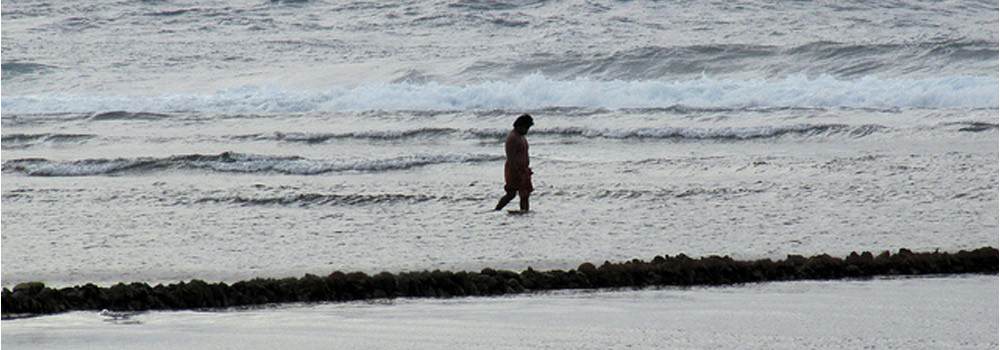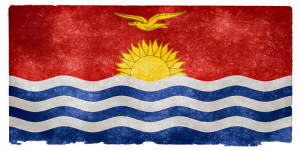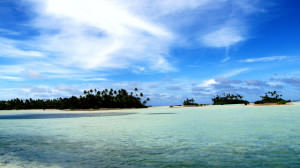The (Soon To Be) Lost Country of Kiribati
Kiribati has had difficulty rebuilding the coastal infrastructure lost to erosion and storm surges. The rising sea levels are a direct result of the coastal erosion. Many of its pancake-flat islands have already been engulfed by the waves, which have also contaminated freshwater supplies, destroyed crops and eroded farms and beaches.
The livelihoods of many islanders depend on the corals reefs and other sea ecosystems, which have been damaged as well. There have also been changes in rainfall patterns, causing droughts in some areas and flooding in others.
Additionally, the nation is also experiencing a high population concentration on the main atoll. With some outer islands having been invaded by the sea, beachside communities have been forced to move.
In South Tarawa, where half of Kiribati’s population lives, the high population density poses huge challenges for the local government concerning food and water, security, health and infrastructure.
The city councils in South Tarawa are also facing lack of space in graveyards, cleanliness issues on the beaches and a gradual loss of freshwater.
The Kiribati government had proposed a man-made floating island, like an offshore oil platform. It would be expensive and a tad surreal, like something out of a post-apocalyptic novel. However, the president says that even the most radical ideas need to be considered.
The government has already launched a negotiation with the Fijian military government to buy land for the relocation of the entire country. President Anote Tong tells Fiji National TV that a local land agent has identified 1500-2000 hectares of freehold land on the island of Vanua Levu.
The president calls for a “relocation with dignity”. To prepare for the possible national repositioning in 50 years, the Kiribati government has launched an Education for Migration Program in order to help their population become more attractive to foreign hosts.
The local councils have also asked other countries for help in training their people in agricultural and nursing. New Zealand’s Recognized Seasonal Employer and Kiribati-Australia Nurses Initiative are the biggest foreign aid programs when it comes to training local people and about 80 Kiribati people received nursing training in Australia.
Kiribati is not on track to meet any of the Millennium Development Goals that all UN members must achieve by 2015. It has a narrow and fragile economic system with very limited sources of income, fully dependent on the world’s demand for their leading export, coconut.
Tourism is also an important part of the local economy, but it is largely constrained by the scarcity of flights. Kiribati is two hours from Hawaii, yet the only air link to the outside world is a Boeing 737 which comes in twice a week from Fiji. “It is only a couple of hours’ flight from Kiribati to Australia,” Tako says. “But we have to stop by Fiji and sometimes Dubai to transfer.”
The country relies largely on foreign assistance. Tako expressed her gratitude for the help they’ve received from Australia, New Zealand and Japan. Australia has been the biggest donor to Kiribati and most of their donation has been used to build seawalls to protect the main road, to help manage the impacts of coastal erosion and rising sea levels and to provide water supply services.
In February 2013, the Foreign Affairs and Trade department of Australia announced a further $2 million donation to help Kiribati in coping with climate variability and change. The money will be used to improve the management of water resources, including village water supplies, through infrastructure upgrades, ground water quality monitoring, and improving sanitation to reduce groundwater pollution.
New Zealand is the only country that has taken in climate refugees. It offers 75 places a year to migrants from the islands and atolls.
Oddly enough, on Kiribati, many people don’t believe in global warming and climate change, especially those who live in the outer islands. Kiribati is a Christian country and 99 per cent of the population believes in God.
The effects of climate change on the everyday life of Kiribati are hard to ignore, but many of them have their own explanation of the disasters. Catholic leaders and priests in Kiribati, who are highly influential, reject the notion that man could be responsible for climate change. They believe climate change is an action from God rather than human activity. They also believe they are losing their island as punishment for human wrongdoing and that they don’t need to do anything because God promised he would never sent a flood to destroy humankind again.
School principal Zita Lopez is one of those people who “does not really” believe in climate change. She says she takes comfort in the Old Testament story of Noah, and God’s promise never to flood the Earth. She shares her view with her students.
“They don’t understand climate change. Even though their island is dying, they still don’t want to do anything or [leave],” Tako says sadly. “They would rather die with the island.”

































Share the post "The (Soon To Be) Lost Country of Kiribati"